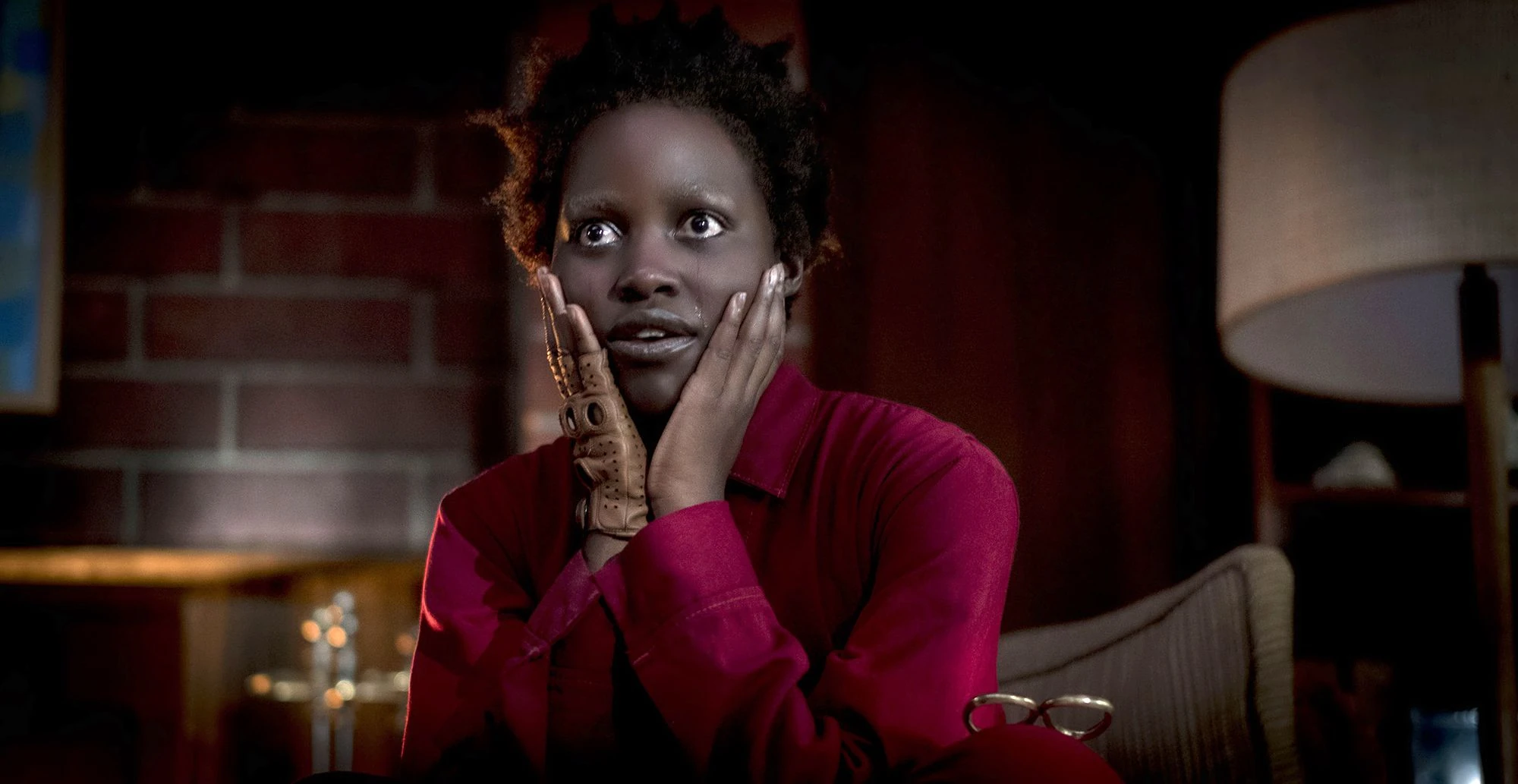You join me once again as I complete the fourth week as I write about some of my favourite bits of scary and horror fiction every day during October.
Today’s topic is another sublime entry from director Jordan Peele. Where Get Out was a horror focusing on racism, Us is a horror focusing on class.
The film starts in 1986 when Adelaide, a young girl, is on a seaside holiday in Santa Cruz when she gets separated from her parents and lost inside a hall of mirrors. She sees herself wearing strange clothing and when her doppelganger reaches out to grab her, she realises it’s not a reflection.
This exchange is traumatising for Adelaide, who is unable to talk following the ordeal. In the present day, as an adult, Adelaide and her family are going on holiday to the same location, staying in a lakeside house near their more affluent and affected family friends.
Adelaide is getting seriously creepy vibes from this place and eventually her doppelganger returns to terrorise her along with doppelgangers for each member of her family.
Without wanting to give any major twists away, it turns out everyone has these doppelgangers who all live underground; the entrance to this place being the beach where the hall of mirrors was located on Adelaide’s first visit.

The choreography for this film needs to be commended as a lot of its horror is in the bizarre way the characters move. The “tethered,” as the doppelgangers call themselves, seem to be caricatures of their normal personas and they all move and act in disjointed ways.
It’s a home invasion movie with a twist, that twist being your home being invaded by yourself. What chance would you stand against someone who knew all your strengths and weaknesses, could imitate and anticipate your every move, while also having trained to overcome you while you have been unaware this was coming.
The themes of class in this film are more deeply buried than racism in Get Out, but don’t take too much digging to be brought to the surface.
Adelaide’s family are middle-class but their family friends, who they don’t particularly like, but seem compelled to impress are more of the upper-middle-class persuasion.
We see evidence of this when Adelaide’s family, while ill-prepared to deal with a home invasion, are at least able to deal with it; are used to fighting and having to protect what they’ve earned from being taken from them.
The rich family are killed almost instantly by the Tethered, by comparison. The mother’s plea to get the smart sensor to call the police is the only real resistance, and it only achieves in having the speaker system play Fuck tha Police by NWA.
But while Adelaide’s family may think of themselves as more oppressed and less affected than the rich family; the actually oppressed people are the Tethered who have been stuck underground, living a sadistic and stark imitation of their counterparts’ lives.

Furthermore, and SPOILER WARNING!!!!! if you’ve not seen the film yet, it turns out Adelaide had actually been replaced by her doppelganger in 1986, meaning the real Adelaide has spent the last thirty-odd years living the experience of the Tethered, knowing what the outside world was like.
It’s another metaphor for a rigid, capitalistic class system, where you can only climb the ladder if you knock someone else off it first. The Tethered are so successful in their takeover, not just because of the ignorance of those on the surface, but their ability to work together to escape their situation and murder their oppressors, whether they knew it or not.
Those on the surface may not think themselves oppressors, but by engaging with a system that rewards ignorance and apathy as a virtue, they are still complicit in that same system that allows the Tethered to exist. The in-film explanation is that the Tethered were an abandoned government experiment, but the metaphor is clear to see.
To enjoy a life of plenty in a capitalistic society, how many people are you condemning to horror? Are the clothes you’re wearing made in a sweatshop? Did the food you ate come from a company that deprived a poor farmer of his land? Did the device you’re using to read this article on have its parts sourced from mines in developing countries using cheap, or even slave labour?
Us shows us two very modern, and yet very primal fears. What if we’re not as benevolent as we think we are? And when you strip away the veneer of civilisation and comfort, what are we really like?